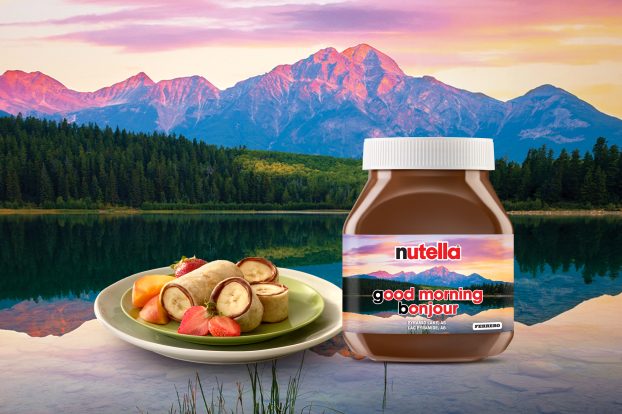Neilson is launching two new milk products and renaming a third this month – all in an attempt to capitalize further on the premium milk market and, in the latter case, to distance itself from the competition.
On the new product side, the company has launched TruCalcium, the first calcium-enriched milk on the Canadian market. The product, which costs about 20 cents more a litre, is the latest in the dairy’s line of premium milk products to be sold in Ontario.
TruCalcium, which comes in skim and 1% varieties, has 33% more calcium than regular milk and is targeted to adults who want to increase their calcium intake without increasing their waistlines.
‘We found that 80% of women and 60% of men wanted to get more calcium in their diets,’ says Rob Burch, president of Neilson Dairy. ‘The benefit of our product is that they can get their calcium in a low-fat product.’
Osteoporosis, a condition characterized by fragile bones as a result of decreasing bone mass, has received a lot of attention in the media as a health issue of concern to women, but many women have avoided drinking the recommended daily allowance of milk – an excellent source of calcium – because of their desire to reduce fat in their diets.
And although cheese and yogurt come in fat-free varieties, health-conscious consumers do not generally eat the quantities necessary to provide them with enough calcium.
While competitor Ault Foods markets premium milk products under its Lactantia and Sealtest brands, Burch believes it is the pharmaceutical firms that will provide the real competition for health-conscious aging adults.
Pharmaceutical firm Mead Johnson addressed the issue last summer by introducing Calais, a six-calorie fruit-flavoured calcium drink. The 300ml sparkling beverage contains the same amount of calcium as an eight-ounce glass of milk, but without the fat.
Nutritional supplement drinks, like Boost and Ensure, are also targeting the same market.
‘These products are providing competition for the dairy industry,’ says Burch. ‘They are milk-based and they are targeting the aging adult population.’
As for TruCalcium, Burch expects Neilson’s new product to be popular with female consumers.
TruCalcium is being promoted throughout Ontario in newspaper ads, created by Bensimon Byrne of Toronto, through public relations efforts and a sampling program. Neilson hopes to introduce the product in Quebec in the near future.
While calcium-enhanced milk is new to this country, some American states, such as California, already market the product to great success, according to Burch, who adds that he expects this trend to take off in Canada.
‘The concept of calcium fortification in other products, like yogurt, is also something to consider in the future, although we have no immediate plans,’ he says.
In another move to increase the size of its business, Neilson is introducing Soy Delight this month. The company hopes the product – the first soy beverage to be sold in a pure pack in the dairy case – will appeal to non-milk drinkers. Other soy milk items are sold in tetra packs on grocery shelves. The packaging is also unique because it has trilingual labelling – English, French and Chinese (many Chinese people are lactose-intolerant and cannot digest cow’s milk).
‘This is the first time we’ve done packaging with three languages,’ says Burch. ‘We hope it helps us to better target our market.’
Neilson is not planning a major ad campaign for Soy Delight, but is promoting the product at store level.
As for the product line renaming, TruFiltre milks, which have been on the market since August 1995, are now being labelled TruTaste.
The original name, which, according to Neilson, highlighted the filtering process that supposedly enhances the product flavor, was a little too close to competitor Lactantia’s PurFiltre product. PurFiltre was launched first.
Burch admits the recent name change was influenced by legal wrangling between Neilson and Ault Foods, the maker of Lactantia PurFiltre. Both parties claimed trademark infringement. According to Burch, the case was settled out of court last year with the terms remaining confidential.
Burch says that, in spite of the legal complications, the new name better represents the image the company wants for its product.
‘We wanted the name to closer represent the consumer benefit,’ says Burch. ‘Our original name focused more on the process.’
And he doesn’t think the change will confuse consumers.
‘Research indicates that when it comes to premium milk products, consumers are very brand loyal,’ he says. ‘This is not always the case with regular milk products.’
Neilson will be supporting the new name with a million-dollar television campaign that runs until mid-April in Ontario. Bensimon Byrne developed the creative.
According to ACNielsen, the premium milk market was a $53 million industry in Canada in 1996 – and it is growing. The volume of specialty milk sold for the 12-month period more than doubled to 48,000 litres from a year earlier.
In targeting adults, premium milk manufacturers have packaged their specially filtered product in decorative, upscale packaging. TruCalcium containers, for example, feature a painted nature scene.
While the premium market has succeeded in introducing a host of new products and categories to the milk market, Burch suggest that perhaps its biggest impact has been its influence on how adults view milk.
‘The premium brands have opened the doors to selective buying by single adults,’ he says. ‘Milk is being considered a beverage that adults drink and they are looking to the premium category for it.’























